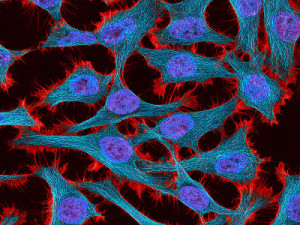D.N.A. Congress Announcement by the Institute of Exponential Sciences
Editor’s Note: The forthcoming D.N.A. Congress in Utrecht, The Netherlands, hosted by the Institute of Exponential Sciences, devoted to discussions of gene therapies, receives the strong endorsement of both The Rational Argumentator and the Nevada Transhumanist Party. The D.N.A. Congress offers a promising venue to discuss the potential for gene therapies to cure diseases, lengthen lifespans, and improve quality of life for millions of people in the coming years and decades.
~ Gennady Stolyarov II, Editor-in-Chief, The Rational Argumentator, June 5, 2016
D.N.A CONGRESS PRESS RELEASE:
The Institute of Exponential Sciences (IES) has a large announcement to make. We are organising D.N.A – The largest European congress on human gene therapies, featuring speakers such as Aubrey de Grey, Liz Parrish, Oliver Medvedik and others.
Our event has been endorsed by LEAF, Heales VZW, BioViva, SENS Research Foundation, Singularity Network, People Unlimited, The Rational Argumentator, and many others. The event will be covered by national media and will be broadcasted online.
To make this vision a reality, we need your support. Share this message and donate today. Thank you!
IES needs your support to help make this vision a reality. Click here to donate to our crowdfunding campaign.
D.N.A – Designing New Advances: The second large Institute of Exponential Sciences event is coming to Utrecht
Utrecht – After a successful event last year in May, the grand congress is ready for a second edition. With a new name, we hope to make exponential sciences more approachable to the general public and bring people in the field closer together. The Institute of Exponential Sciences congress 2016 will be held at RASA podium on the 9th of July. The main theme of the event is gene therapies and cutting-edge applications of such therapies, such as health extension and interventions against human aging. To guarantee a great event, we have invited some of the biggest names in the field. Our guest speakers will be as follows:
Opening the event will be Oliver Medvedik, Ph.D, director of scientific programs at Genspace. Dr. Medvedik has earned his Ph.D at Harvard Medical school in the biomedical and biological sciences program. Since graduating from Harvard, he has worked as a biotechnology consultant, taught molecular biology to numerous undergraduates at Harvard, and mentored two of Harvard’s teams for the international genetically engineered machines competition (IGEM) held annually at M.I.T.
Our second speaker is Aubrey David Nicholas Jasper de Grey, Ph.D, an English author, Chief Science Officer of the SENS Research Foundation, and editor-in-chief of the academic journal Rejuvenation Research. Aubrey de Grey is well known for his focus on regenerative medicine and views on human aging. He will take the stage talking about the applications of current and upcoming technologies and studies which hold the potential to greatly extend our healthy lifespan.
Our third speaker is Tatjana Kochetkova, Ph.D, who is a fellow of the Institute of Exponential Sciences and a bioethicist. Dr. Kochetkova will follow up discussing the ethical and philosophical side of the technology and will address questions of what exponential technologies in biotech mean for society.
Our fourth speaker is Elizabeth Parrish, a fellow of the Institute of Exponential Sciences and the Founder and CEO of BioViva Sciences Inc, a Delaware corporation based in Seattle, WA, with labs and participating clinics in South/Central America where the majority of practical work is carried out. BioViva has been noted for being the first corporation in the world to treat a patient with gene therapy to reverse aging. The woman who wants to genetically engineer you will cover the basics of BioViva’s approach and vision for the the future, as well as the potential that gene therapies hold for radically improving our health and lives in the future.
Our fifth speaker will be Keith Comito, who is the founder and president of the Life Extension Advocacy Foundation (LEAF), a 501(c)(3) non-profit organization and a partner of the Institute of Exponential Sciences. Through LEAF, he operates the crowdfunding platform Lifespan.io, which supports biomedical research aimed at extending healthy human lifespan. He also serves as policy coordinator for the Global Healthspan Policy Institute, which facilitates relationships between researchers and government to advance initiatives in support of healthy life extension.
About Institute of Exponential Sciences
The Institute of Exponential Sciences is an international innovation-oriented think tank, outreach organisation, and networking platform based in the Netherlands, in the city of Utrecht. Its main activities include organising lectures and conferences, providing quality consultancy on innovation and exponential technologies, and collaborating with student organisations and universities in educating the public on the importance of exponential technologies.
It was founded by members of its predecessor, the Arma’thwynn society, which was a student group of like-minded young academics in the Netherlands. After organising events and attracting a very diverse and professional team of entrepreneurs, academics, and journalists, the society decided to move past student politics and make the move towards professionalism.
The Institute of Exponential Sciences is the result of that decision. After organising successful events (the largest of which was their symposium in April, 2015), the Institute of Exponential Sciences formalised its mission and reached out towards a process of international collaboration with other entities which share a techno-positive vision. The institute strives towards excellence in providing the best information and resources related to the issues relevant in the rapidly advancing technological society we live in.
The IES approach is focused on providing interdisciplinary education in the fields of exponential technologies such as artificial intelligence, bio-informatics, gene therapies, 3D-printing, augmented reality, and neural interfacing. We also provide a networking platform which allows entrepreneurs, scientists, journalists, and students to get in touch with others with similar ideas so that they may create the technologies of tomorrow. The IES strives not only to improve the speed of development of these technologies, but also to show the public the amazing possibilities technology provides for society.
IES and the IES logo are either registered trademarks or trademarks of IES Foundation in the Netherlands and/or other countries. All other products and/or services referenced are trademarks of their respective entities.





